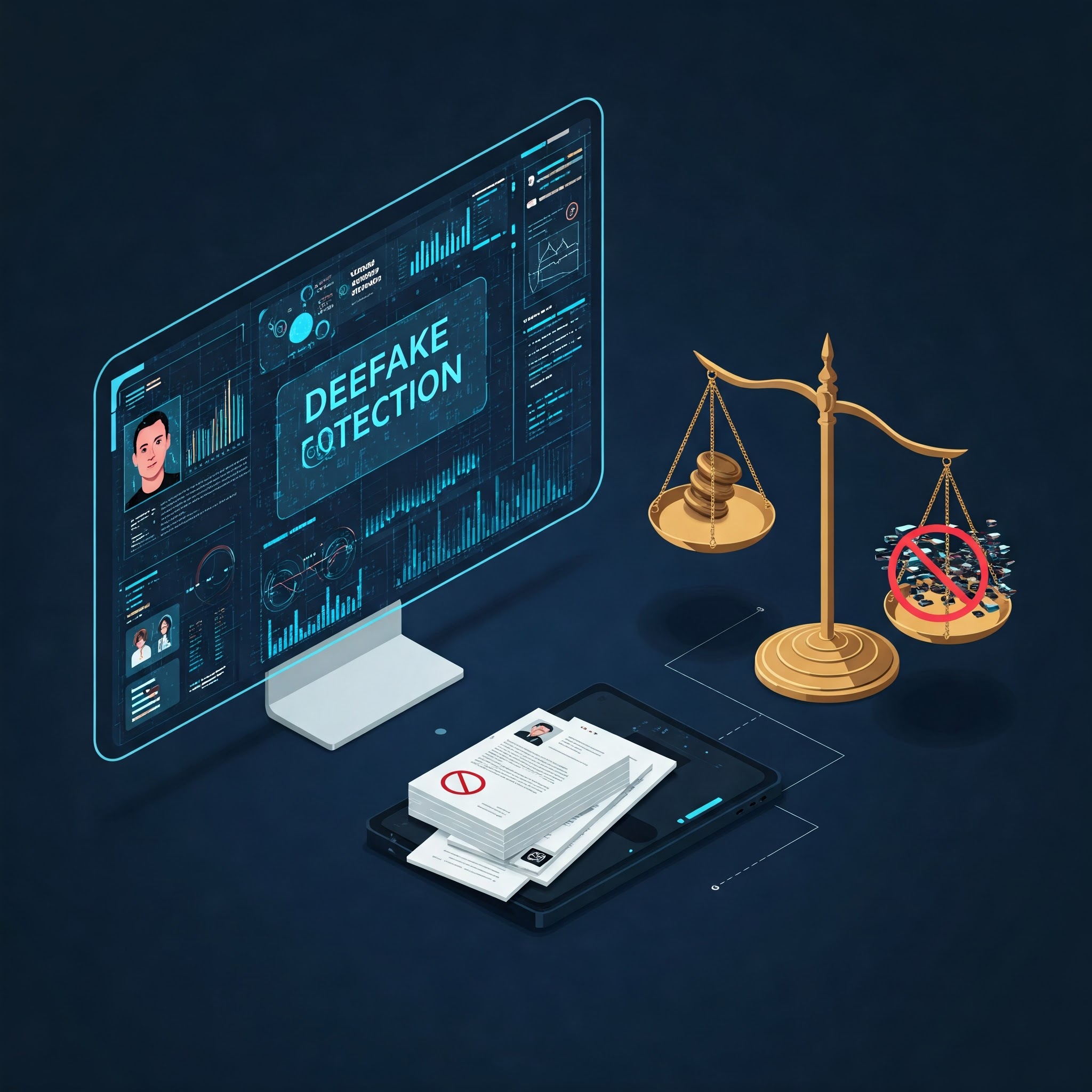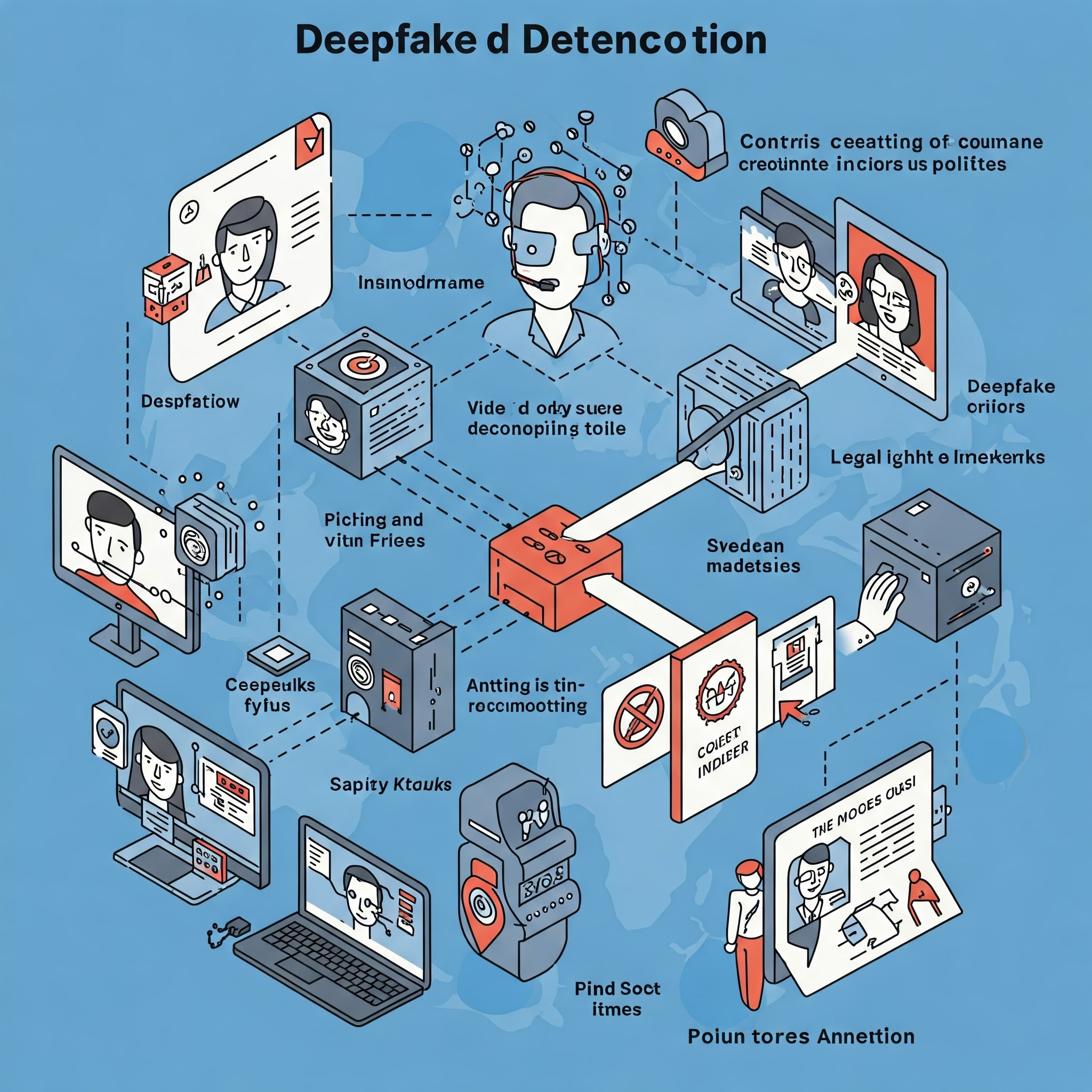
1. How AI Detection Tools Spot Deepfakes & Fake News
A. Technical Approaches to Detecting AI-Generated Content
AI-generated media often leaves subtle "fingerprints" that detection tools analyze:
i) Deepfake Video/Audio Detection
Facial & Vocal Artifacts:
Blinking Patterns: Early deepfakes struggled with natural eye blinking.
Lip Sync Errors: AI may misalign audio with lip movements.
Blood Flow & Lighting: Real faces have micro-changes in skin tone (PPG signals) that fakes lack.
Vocal Glitches: AI voice clones may miss natural pauses or emotional tones.

Forensic Analysis:
Error Level Analysis (ELA): Detects compression inconsistencies in images/videos.
GAN Fingerprints: Generative AI models (like Stable Diffusion) leave noise patterns in pixels.
Tools:
Microsoft Video Authenticator (analyzes blending artifacts in deepfakes).
Intel’s FakeCatcher (detects real-time blood flow in videos).
ii) AI-Generated Text Detection
Perplexity & Burstiness: AI text is often overly uniform, while human writing varies in style.
Token Probability Checks: Language models like GPT-4 generate text with predictable word choices.
Tools:
OpenAI’s AI Text Classifier (flags ChatGPT-generated content).
GPTZero (measures "randomness" in writing to spot AI).
iii) Image Verification Tools
Metadata & Watermarks:
Adobe Content Credentials: Embeds tamper-proof metadata in AI-generated images.
Google SynthID: Invisible watermark for AI-made pics (even after edits).
Limitations:
Adversarial Attacks: Some AI models are trained to evade detection.
False Positives: Human-written content can sometimes be flagged as AI.
2. Global Anti-Deepfake Laws & Regulations

A. European Union (EU AI Act, 2024)
Key Rules:
Ban on Manipulative Deepfakes: Illegal to use AI to generate non-consensual fake porn or impersonate real people.
Watermarking Requirement: All AI-generated content must be labeled.
High-Risk AI Transparency: Companies must disclose if AI was used in political ads.
B. United States (State & Federal Efforts)
California’s Deepfake Law (2019): Bans deepfakes in elections within 60 days of voting.
Proposed DEEPFAKES Act (Federal):
Criminalizes malicious deepfakes used for harassment or fraud.
Requires platforms to remove deepfakes within 48 hours of reporting.
C. China’s Strict Deepfake Regulations (2023)
Mandatory Consent: Deepfake creators must get permission from people they replicate.
Real-Name Verification: AI tool users must register government IDs.
Platform Liability: Social media must take down unlabeled deepfakes within 3 days.
D. South Korea’s AI Fact-Checking System
Government AI Monitoring: Uses AI to detect fake news in real-time during elections.
Public Alerts: Sends SMS warnings about viral disinformation.
3. Emerging Countermeasures & Future Solutions
A. Blockchain for Media Authentication
Example: Truepic uses blockchain to verify photo/video origins (used by news agencies).
B. AI "Immune Systems" for Social Media
Meta’s "Sphere" AI: Cross-checks viral posts against Wikipedia for accuracy.
Twitter’s Community Notes: Crowdsourced corrections on misleading tweets.
C. Real-Time Deepfake Interception
DARPA’s Semantic Forensics (SemaFor): AI that detects narrative inconsistencies in fake videos.
D. Public Education Initiatives
Finland’s "Media Literacy" Schools: Trains students to spot AI fakes via quizzes.
BBC’s "Beyond Fake News" Campaign: Teaches critical thinking for digital content.

Final Thoughts
While AI-powered disinformation is a growing threat, detection tech, smart laws, and public awareness are evolving to fight back.
Powered by Froala Editor

Parenting
Dependence on AI & Loss of Human Skills
Artificial Intelligence (AI)
AI in Cybersecurity: Hacking & Cybercrime
Artificial Intelligence (AI)
Existential Risk & Superintelligent AI
Artificial Intelligence (AI)
AI Manipulation & Behavioral Control